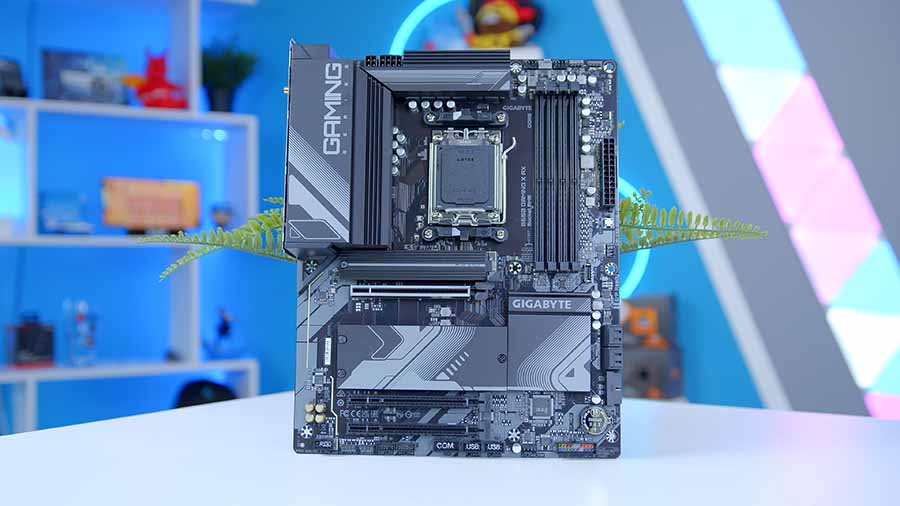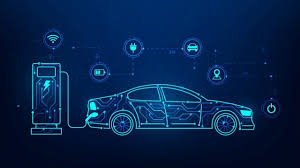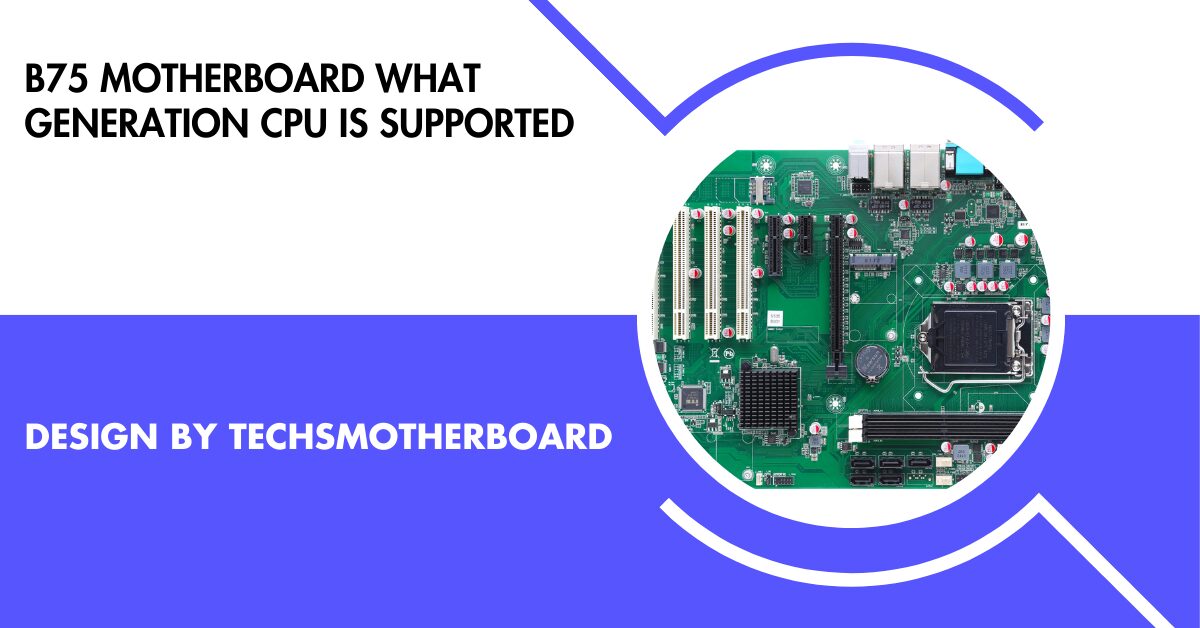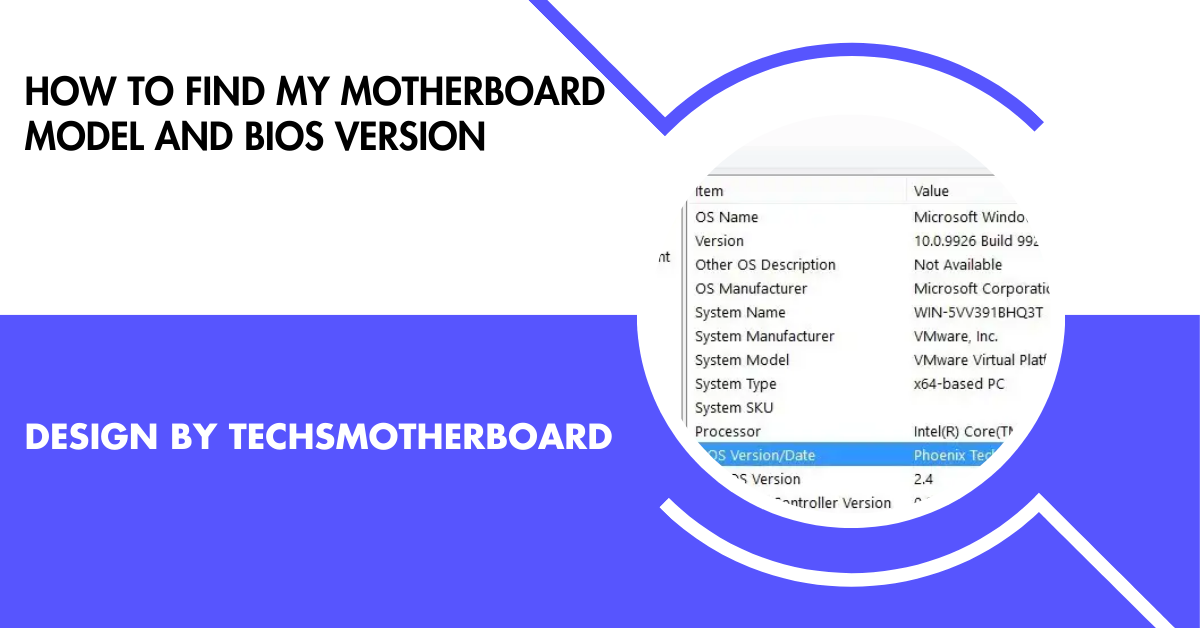Blog
What Is The Next Level Up On Motherboard After B650 – A Detailed Guide!

The next level up from a B650 motherboard is the X670 and X670E, offering enhanced performance, advanced features like full PCIe 5.0 support, and better future-proofing, making them ideal for gamers, content creators, and enthusiasts.
In this article, we’ll explore the next tier of motherboards after the B650, focusing on the X670 and X670E chipsets, which are ideal for users seeking enhanced performance, more features, and future-proofing their systems.
Understanding the B650 Motherboard:

Before diving into the upgrades, it’s important to understand what the B650 motherboard offers. The B650 chipset is part of AMD’s mid-range lineup, designed for users who want a balance of performance and affordability.
It supports AMD Ryzen 7000 series processors, PCIe 5.0 (in some models), and has a solid feature set suitable for gaming, content creation, and everyday computing. However, for users who need more advanced features or higher performance, moving up to the next tier is a logical step.
The Next Level Up: X670 and X670E Motherboards
The natural progression from a B650 motherboard is to an X670 or X670E motherboard. These chipsets are part of AMD’s high-end lineup, designed for enthusiasts, gamers, and professionals who require the best in terms of performance, connectivity, and expandability.
Key Features of X670 and X670E Motherboards:
- Enhanced PCIe Support: While the B650 chipset may offer PCIe 5.0 support on select slots, X670 and X670E motherboards typically provide more extensive PCIe 5.0 support across multiple slots. This is particularly beneficial for users looking to install the latest GPUs, NVMe SSDs, and other high-speed components.
- Advanced Overclocking Capabilities: X670 and X670E motherboards come with more robust power delivery systems, allowing for better stability and higher overclocking potential. This makes them ideal for users who want to push their CPUs to the limit.
- More USB and Connectivity Options: These motherboards offer more USB ports, including USB 4.0 in some models, and better connectivity options like dual Ethernet ports or faster Wi-Fi 6E. This is crucial for users who need multiple high-speed connections for peripherals and network devices.
- Dual or Triple GPU Support: Unlike the B650, which is often limited to a single GPU, X670 and X670E motherboards can support dual or even triple GPU setups, making them perfect for high-end gaming rigs or professional workstations that require intensive graphics processing.
- Expanded Storage Options: With more M.2 slots and SATA ports, these motherboards can accommodate multiple SSDs and hard drives, providing ample storage space for large files, games, and applications.
- Future-Proofing: The X670E, in particular, is designed with future-proofing in mind, offering the latest technologies and standards to ensure compatibility with upcoming hardware releases.
X670 vs. X670E: Which One Should You Choose?
While both X670 and X670E motherboards offer significant upgrades over the B650, there are some differences to consider:
- X670 Motherboards: These provide a strong balance between performance and features, offering PCIe 5.0 support on select slots, advanced overclocking, and a wide range of connectivity options. They are suitable for users who need high performance but may not require the absolute latest technologies.
- X670E Motherboards: The “E” stands for “Extreme,” and these motherboards offer the most comprehensive set of features, including full PCIe 5.0 support across all slots, even more robust power delivery for extreme overclocking, and the latest connectivity standards. X670E motherboards are ideal for enthusiasts and professionals who demand the very best.
Also Read: Will Updating My Motherboard Fix My Keyboard Not Working – The Role of BIOS and Driver Updates!
Who Should Consider Upgrading?
Upgrading from a B650 to an X670 or X670E motherboard makes sense for several types of users:
- Enthusiasts and Overclockers: If you enjoy pushing your hardware to its limits, the advanced power delivery and overclocking features of the X670/X670E will be beneficial.
- Gamers: For gamers looking to maximize performance with the latest GPUs and high-speed storage, these motherboards provide the necessary infrastructure.
- Content Creators: Professionals who work with video editing, 3D rendering, or other resource-intensive tasks will benefit from the expanded storage options, multiple GPU support, and faster connectivity.
- Future-Proofers: If you want to ensure your system is ready for the latest and upcoming technologies, the X670E offers the best future-proofing options.
FAQ’s
1. What is the main difference between the B650 and X670 motherboards?
The X670 offers more PCIe 5.0 support, better overclocking capabilities, and additional connectivity options compared to the B650.
2. Is the X670E better than the X670?
Yes, the X670E provides full PCIe 5.0 support across all slots and is designed for extreme performance, making it superior to the X670.
3. Who should consider upgrading to an X670 or X670E motherboard?
Enthusiasts, gamers, content creators, and those looking to future-proof their systems should consider upgrading.
4. What are the benefits of PCIe 5.0 on X670 and X670E motherboards?
PCIe 5.0 offers double the bandwidth of PCIe 4.0, which is beneficial for high-speed GPUs and NVMe SSDs.
5. Can I use multiple GPUs on an X670 or X670E motherboard?
Yes, these motherboards support dual or even triple GPU setups, ideal for gaming or professional workstations.
6. Is overclocking better on X670/X670E compared to B650?
Yes, X670 and X670E motherboards have more robust power delivery, allowing for better and more stable overclocking.
7. Do X670/X670E motherboards offer more storage options than B650?
Yes, they provide more M.2 slots and SATA ports, accommodating multiple SSDs and hard drives.
8. Are X670 and X670E motherboards more expensive than B650?
Yes, due to their advanced features and performance, X670 and X670E motherboards are generally more expensive.
9. What connectivity improvements do X670/X670E motherboards offer?
They offer more USB ports, including USB 4.0, and better networking options like Wi-Fi 6E and dual Ethernet ports.
10. Is it worth upgrading from a B650 to an X670 or X670E motherboard?
If you need advanced features, better performance, and future-proofing, upgrading is definitely worth considering.
Conclusion
Upgrading from a B650 to an X670 or X670E motherboard is a significant step up, offering enhanced performance, more features, and better future-proofing. Whether you’re a gamer, content creator, or tech enthusiast, these motherboards provide the tools needed to build a powerful and versatile PC. While the B650 is a solid choice for many users, those seeking the best performance and latest technologies will find the X670 and X670E to be worthwhile investments.
Blog
Charging Ahead: What Drivers Need to Know About the Future of EV Charging

Key Takeaways
- EV charging technology is evolving, making electric vehicles increasingly feasible for daily life and travel.
- Expansion of charging networks, battery advances, policy updates, and digital integration are shaping a more accessible future for EV drivers.
- Government incentives and private investment are accelerating adoption rates and helping improve the user experience.
- Staying informed with trusted resources enables drivers and property managers to make smarter decisions.
What Makes EV Charging a Hot Topic Today?
The electric vehicle (EV) market is experiencing unprecedented growth, with adoption rates in the United States, Europe, and Asia doubling every few years. As more people move toward a cleaner, sustainable mode of transportation, the demand for reliable and convenient charging infrastructure intensifies. Daily routines are shifting—drivers are looking for solutions that minimize downtime and integrate seamlessly into their lifestyles. While public charging hubs are becoming more visible, at-home charging remains a critical part of the EV ecosystem, especially in suburban and rural environments where access to public chargers may be limited.
A spectrum of innovative EV charging products has become available. To address these needs and preferences, sites like https://www.delta-americas.com/en-US/products/EV-Charging/ALL/ help demystify the range of options and support decision-making for drivers, property managers, and business owners. As technology matures and variety increases, consumers stand to benefit from a rapidly improving landscape, where charging an EV can be as easy and routine as refueling a traditional vehicle used to be. This transformation doesn’t just help individual drivers; it also pushes cities and organizations closer to their environmental targets.
Types of EV Charging Stations
Electric vehicle owners can select from various charging station options designed to align with specific needs, whether at home, work, or on the road. Level 1 charging is the most straightforward and widely accessible, utilizing a standard 120-volt household outlet. This method offers a slow and steady charge, typically taking 8 to 12 hours to replenish an EV battery, making it an excellent solution for overnight use or occasional drivers. Next is Level 2 charging, which requires a dedicated 240-volt connection (similar to an electric dryer or oven outlet). These chargers are significantly faster, filling most batteries in around 4 to 8 hours, and are often found in homes, workplaces, apartment complexes, and public parking areas. Their balance of speed and convenience makes them a preferred choice for those who commute longer distances or regularly use their EV.
For longer journeys or when time is of the essence, DC fast charging stations are game changers. These advanced units provide a high-voltage direct current, enabling most modern EVs to reach an 80% charge in under 40 minutes, sometimes as quickly as 20 minutes. Fast-charging corridors on highways and major travel routes are becoming more widespread, easing the minds of road-tripping drivers and making it feasible to take electric vehicles on cross-country adventures. Choosing the proper charging infrastructure depends on usage patterns, parking logistics, and the car model’s compatibility—a tailored approach ensures efficiency and convenience for all EV drivers.
Growth of Charging Infrastructure: Opportunities and Challenges
Expanding charging infrastructure is vital for the mainstream adoption of electric vehicles, but it presents a unique set of challenges and opportunities. Across the United States, public and private investments have driven a surge in available charging stations. According to the U.S. Department of Energy, public EV charging ports have increased by more than 40% in the past two years. Investments aren’t limited to dense urban areas; many communities, workplaces, retail sites, and residential developments are joining the effort to expand coverage. These advancements give more people the confidence to choose an EV, knowing that infrastructure is starting to match rising demand.
However, growth is not without hurdles. Uneven access remains a significant barrier—some rural or low-income neighborhoods still have scarce options. Public charger uptime, user experience, and support for various EV models also require ongoing focus and resources. For businesses and property owners, installing chargers is increasingly recognized as a strategy to attract and retain tenants, increase property value, and demonstrate a commitment to sustainability. If guided by thoughtful planning and regular maintenance, this movement aims to create a network where all drivers have equitable and reliable access.
How Battery Innovation Is Changing the Game
Battery technology is a crucial driver of progress in the EV sector, impacting the vehicle range and how quickly and efficiently a vehicle can be charged. Traditional lithium-ion batteries have served the market well, but researchers and automakers are pushing boundaries with solid-state designs and advanced chemistries like lithium-iron-phosphate (LFP). These breakthroughs could revolutionize the user experience, offering higher energy storage, longer lifespans, and—most importantly—shorter charging times. As a result, future EV owners may spend less time waiting and more time on the road, with projections suggesting that 80% of charges in as little as 10-15 minutes are within reach over the next decade.
Such strides in energy density also alleviate “range anxiety,” a long-standing barrier to EV adoption, by enabling drivers to travel greater distances on a single charge. This symbiotic relationship between faster charging, more extended range, and expanded infrastructure means that as batteries improve, the collective journey toward sustainable mobility becomes smoother for everyone.
Smart Charging and the Role of Technology
Technological integration lies at the heart of modern EV charging. Intelligent charging systems enable vehicles, stations, and electricity grids to communicate efficiently, optimizing charging times based on utility rates, grid demand, and renewable energy availability. For drivers, this means charging overnight or during periods when electricity is cheaper and cleaner, often saving money and reducing environmental impact. Intuitive smartphone apps allow users to monitor charging sessions, receive notifications, and even reserve public chargers in advance—all from their hands.
Smart charging is also fueling new opportunities for grid stability. Vehicle-to-grid (V2G) technology allows EVs to return excess stored energy to the power grid during peak demand, creating a two-way relationship that supports both the driver and the broader energy ecosystem. For businesses and multifamily property owners, smart charging offers detailed usage analytics, automated billing, load balancing, and remote troubleshooting—features that cut costs and ensure reliable service. As energy demands and vehicle ownership patterns change, these digital tools will become essential for individual and large-scale operators.
Government Policies and Incentives
A wave of supportive policies is helping catalyze the transition to electric vehicles. Governments at all levels, from federal agencies to city councils, offer incentives to offset the cost of charger installation and grid upgrades. Homeowners, businesses, and landlords may qualify for tax credits, direct rebates, grants, or discounted utility rates explicitly designed to promote EV charging solutions. These programs frequently evolve, so regular research is vital to maximizing available savings.
Local governments are also working to streamline permitting and zoning rules, reducing red tape that once delayed charger deployment. By monitoring policy updates and leveraging available programs, drivers and property owners can minimize up-front costs and tap into long-term value. For the latest policy developments, news sources and official energy department bulletins are excellent places to monitor trends and incentive opportunities.
Tips for Drivers and Property Owners
- Assess your needs: Analyze your daily routine and parking situation to determine if at-home, workplace, or public charging is best.
- Research incentives: Before installing any equipment, look for rebates and subsidies provided by utilities, cities, or state programs.
- Consider future trends: Anticipate how evolving technology might affect your setup, such as compatibility with smart chargers or network expansions.
- Stay informed: Keeping up with updates through trustworthy outlets—such as The New York Times—ensures you’re ahead of opportunities and challenges in EV infrastructure.
Looking Ahead: What’s Next for EV Charging?
The landscape of EV charging is moving at full speed, unlocking potential for cleaner transportation, smarter cities, and more efficient daily routines. Advances in battery technology, network expansion, and digital integration are expected to accelerate in the coming years, while policy frameworks and incentive programs continue to reduce barriers to entry. Businesses, property owners, policymakers, and drivers play crucial roles in shaping what comes next, bridging the divide between ambition and implementation.
By taking advantage of new technology, government support, and accessible charging options from trusted sources, everyone can benefit from a more sustainable, flexible, and user-friendly driving experience. As news coverage and official data demonstrate, a robust EV charging ecosystem is within reach, redefining the future of mobility for communities everywhere.
Blog
Fix Your Finances: A Simple Guide for Small Business Owners

Running a small business is tough. Between juggling inventory, marketing, payroll, and operations, financial management often ends up being reactive rather than strategic. But it doesn’t have to be.
Fixing your finances isn’t about complicated spreadsheets or overnight success — it’s about making informed, consistent choices. Whether you’re trying to stop the bleed or get ahead of the curve, this guide will walk you through eight smart, actionable steps to take control of your business finances. No jargon. No fluff. Just clear, simple advice that works.
Ready to learn more? Keep reading!
1. Know Where You Stand: Start With a Financial Check-Up
You can’t fix what you can’t see. The first step toward financial stability is to assess your current situation. Review your profit and loss statements, cash flow records, and balance sheets. Look at how much you’re earning, where you’re spending, and how those two numbers stack up.
Accounting tools like QuickBooks or Wave can make this easier, but plugging in numbers isn’t enough. You need to understand the story your finances are telling. Are sales increasing but profit margins shrinking? Are you relying too heavily on a few big clients? Once you’ve got a full picture, you’ll know what needs attention and what’s already working.
2. Tackle Debt with Strategy, Not Stress
Debt isn’t always a bad thing, but unmanaged debt can quietly eat away at your business. If you’ve taken out loans, lines of credit, or used personal funds to stay afloat, now is the time to get strategic. Make a list of all your debts, including the balances, interest rates, and payment terms. Focus on paying off high-interest debt first or consolidating multiple loans into a single, lower-interest payment.
Use online tools like SoFi’s debt consolidation calculator. Simply visit https://www.sofi.com/calculators/debt-consolidation-calculator/ to get started. Here, you can input all your current debts and see how a consolidation loan could lower your monthly payments or total interest paid over time.
It’s quick, simple, and gives you a clearer picture of whether consolidation is a smart move. Rather than guessing or stressing, you’ll have data to guide your decisions.
3. Separate Business and Personal Finances
Mixing personal and business finances might seem harmless at first—using your personal credit card for supplies or paying yourself directly from incoming payments—but over time, this makes bookkeeping a mess. Worse, it can raise red flags during tax season and even damage your chances of securing business funding later.
Set up a business checking account and credit card. Pay yourself a fixed salary or owner’s draw, and keep all receipts, invoices, and business expenses within your financial system. It doesn’t simply make it easier to track performance but also builds the financial discipline your business needs to grow sustainably.
4. Trim the Fat: Cut Unnecessary Costs
Every dollar counts, especially when margins are tight. Many small business owners sign up for tools, software, or services that seem useful at the time but quietly drain money every month. It’s easy to lose sight of recurring costs when they’re on autopilot. Take a day to go through your expenses. Cancel unused subscriptions, renegotiate contracts, and consider more affordable alternatives for high-cost items.
Cutting costs doesn’t mean cutting corners. It means being intentional with your spending.
5. Build an Emergency Fund — Even if It’s Small
Emergencies rarely give warnings. Equipment breaks down, sales slow unexpectedly, or a key client delays payment. Without a safety net, these situations can quickly lead to high-interest debt or late payroll. That’s why every business needs a cushion.
Start small. Set aside a percentage of your monthly profits—even five percent makes a difference. Automate it so the money moves into a separate savings account without you thinking about it. Over time, build toward covering one to three months of operating expenses. This fund gives you peace of mind and buying time when things get rough.
6. Forecast Realistically — Not Optimistically
Many small business owners fall into the trap of overestimating future revenue. It’s tempting to assume that next month will be better or that a big deal will come through. But optimism without data can be risky. Forecasting should be grounded in reality, not wishful thinking.
Use actual financial records from previous months or years to project future income and expenses. If sales dipped last summer, plan for a similar pattern. If you added a new product line this year, factor in time for it to gain traction before counting on strong returns. A realistic forecast helps you budget more effectively and prevents overspending.
7. Price Your Products and Services Properly
Pricing isn’t just about being cheaper than your competitors. It’s about covering your costs, paying yourself fairly, and creating value. Many small business owners undercharge out of fear—fear of losing customers, appearing too expensive, or being compared to larger competitors. But low prices can hurt your business more than help it.
To price properly, start by calculating your true costs, including materials, time, overhead, and taxes. Then, add a reasonable margin that reflects the value you provide. If you offer expert service, personalized attention, or high-quality products, charge for it. Customers who recognize your worth will pay for it.
8. Understand Your Tax Obligations (and Plan Ahead)
Taxes are unavoidable, but they don’t have to be overwhelming. Too many small business owners wait until tax season to think about what they owe. That approach leads to surprises, missed deductions, and unnecessary stress. Instead, treat taxes as a monthly responsibility.
Set aside a portion of your revenue every month for taxes. If you’re unsure how much, a tax advisor can help estimate the right percentage based on your business type and location. Keep all receipts and categorize expenses as they happen. This makes year-end filing easier and ensures you don’t miss out on legitimate write-offs.
Fixing your finances is less about perfection and more about intention. It’s about choosing clarity over chaos, responsibility over reaction, and long-term strength over short-term comfort.
As a small business owner, you already know how to solve problems, take risks, and adapt. Managing your money is just another challenge you’re fully capable of mastering. The sooner you start, the sooner you stop operating in survival mode and start building a business that works for you—not the other way around.
Blog
The Social Rituals and Etiquette of the Modern Cigar Lounge

What Makes a Cigar Lounge Unique?
For those seeking a blend of relaxation and camaraderie, a modern Cigar Lounge is a distinctive retreat from the usual social settings. The ambiance is carefully crafted to make every guest feel comfortable, whether you arrive alone or with friends.
Across the globe, these lounges balance timeless tradition and modern style harmoniously, creating a unique environment unlike typical bars or coffee shops. Comfortable seating, curated music, and the gentle hum of conversation work together to promote meaningful interaction.
As you step inside a Cigar Lounge, the subtle scents of aged tobacco and the sight of proudly displayed humidors serve as a gentle invitation to slow down and savor the moment. Lounges encourage a sense of community, often hosting tastings, educational events, and informal gatherings, all aimed at deepening guests’ appreciation for the art of cigar enjoyment.
The experience is about much more than smoking, though that’s certainly central. It’s about the shared rituals, respect for the heritage of cigars, and the type of relaxed talk that can only emerge when there’s no rush to finish.
Knowledgeable staff are usually happy to answer questions, demystify cigar jargon, and help new visitors feel at home. No matter where you go, the hallmark of a great cigar lounge is how it brings people together to enjoy cigars, good company, and thoughtful conversation.
Choosing Your Cigar: Tips for Beginners and Enthusiasts
Choosing a cigar from a well-stocked humidor can be a memorable part of your lounge experience, though it may feel daunting for newcomers. Many lounges take pride in guiding guests through the selection process, offering personalized suggestions to match different preferences and levels of experience.
For beginners looking to buy cigars, starting with mild-bodied options wrapped in lighter leaves is often smart—these provide a smooth, approachable introduction without overpowering the palate.
Seasoned cigar lovers often appreciate the chance to discuss their favorites and swap tips. According to a beginner’s guide to cigar smoking, familiarizing yourself with cigar shapes, sizes, and blends broadens your options and helps you talk shop with other patrons. You might discuss tasting notes such as cedar, chocolate, spice, or coffee, which become easier to notice with practice.
Trying cigars from different regions also helps develop a sense of what you enjoy most. Staff will often walk you through the differences between Nicaraguan and Dominican tobaccos, for example, or steer you toward limited releases for an exceptional experience. Don’t be shy about expressing your preferences or asking questions—lounges are built around helping people learn and enjoy together.
The Foundations of Cigar Lounge Etiquette
Etiquette is at the core of cigar lounge culture. Following these often unwritten rules creates an environment where everyone feels respected and comfortable. For instance, asking before joining a group is customary, rather than assuming a free seat or interrupting an ongoing conversation. These small courtesies quickly signal that you understand and appreciate the atmosphere.
Awareness of noise is key, as the lounge’s quiet hum is often part of the appeal. Loud phone calls or disruptive behavior can spoil the mood for others, and nearly all lounges expect guests to take calls outside. Scent can also play a big part—using heavy colognes or perfumes masks the nuanced aromas that serious cigar enthusiasts relish.
It’s similarly essential to treat shared items, like lighters and cutters, with care—never use them without permission and always return them promptly. Disposing of cigar butts and ashes in provided trays, not on the floor, maintains a clean and inviting setting for every guest.
A genuine interest in learning and sharing experiences, rather than trying to show off extensive cigar knowledge, makes the space feel accessible to all. Visitors build a friendlier, more inclusive community by approaching the lounge with humility and an open mind.
Lighting and Enjoying Your Cigar Properly
Lighting a cigar correctly is almost sacred in cigar lounge culture. Proper lighting not only preserves the cigar’s flavor but also highlights the skill with which it was crafted. The process begins with selecting the right lighter: wood matches and butane lighters are universally recommended, as they avoid contaminating the tobacco with unwanted scents or flavors.
Hold the flame just close enough to toast the foot of the cigar evenly, turning it slowly to ignite the entire circumference. This step, while subtle, ensures an even burn and brings out the delicate flavors embedded in the leaves.
Once lit, cigar enjoyment is about relaxation and pacing. Longer, gentler puffs help preserve the cigar’s structure and flavor. At the same time, frequent ashing can be avoided—let the ash grow naturally, as this enhances taste and helps avoid excess debris on clothing or furniture.
If your cigar goes out, tap away the ash gently before relighting, avoiding rough handling, chewing, or biting. Observing longtime lounge guests, you’ll notice the almost meditative pace and careful, intentional movements that characterize genuine appreciation. These rituals become second nature with practice and reinforce the communal respect shared in every quality cigar lounge.
Dress Codes and Personal Presentation
Attire in the cigar lounge plays a bigger role than many first realize. Smart casual is a standard, balancing comfort and consideration for the refined vibe these lounges cultivate. Collared shirts, dark jeans or slacks, and closed-toe shoes blend well and show deference to the prestigious atmosphere. While not every establishment enforces strict policies, most have guidelines against sportswear, torn clothing, or overly casual items like tank tops or sandals.
Just as choosing the right cigar signals respect for the lounge’s traditions, dressing well communicates your appreciation for the community. If you’re ever unsure about what to wear, take cues from photos of the lounge or check online reviews, which typically mention notable dress expectations. Ultimately, personal presentation enriches the shared environment, making everyone feel part of an exclusive yet inclusive experience.
Navigating Conversation and Social Boundaries
Conversation is the lifeblood of any cigar lounge. Unlike louder social settings, lounges create a space for deeper discussions, ranging from stories about cigars to book recommendations or travel memories. Entering conversations respectfully is a must: pay attention to body language, and if someone seems engrossed in reading or contemplation, a polite nod can suffice instead of interrupting.
Guests are generally eager to discuss recent finds or swap recommendations, making lounges a great spot to discover new cigars and perspectives. Good conversation flows when all participants feel heard, and the best topics are usually light or universally appealing: music, cuisine, or current events (avoiding the most divisive subjects unless among friends). Humor and storytelling are welcome, but never at the expense of others’ comfort or sense of privacy. By tuning into the subtle signals of the room, friendships form easily, and first-time guests quickly become regulars.
How Lounge Environment Impacts Your Visit
The atmosphere in a cigar lounge—everything from lighting to seating comfort to air quality—can dramatically shape a guest’s impression. Leading venues are heavily invested in sophisticated ventilation systems, ensuring that the air remains breathable and pleasant even when many cigars are enjoyed. Carefully regulated humidors are another cornerstone, keeping cigars fresh and the flavors complex and consistent from visit to visit.
According to Cigar Aficionado, many modern lounges combine classic aesthetics with contemporary conveniences, adding features like temperature-controlled storage, gourmet snacks, and even personal lockers for regular guests. These details, though sometimes subtle, reflect a commitment to excellence. Guests should choose lounges that prioritize such comfort and quality, as these play a significant role in elevating the simple act of enjoying a good cigar into a memorable event.
-

 Tech4 weeks ago
Tech4 weeks agoSotwe STW Explained How a Radical Platform is Redefining Online Expression
-

 Entertainment3 months ago
Entertainment3 months agoHow Do I Turn On the Beatbot?
-

 Motherboard Guide10 months ago
Motherboard Guide10 months agoAre B750 Motherboard A Good Choice – A Complete Overview!
-

 Motherboard Guide10 months ago
Motherboard Guide10 months agoAre Gigabyte Motherboards Good – A Comprehensive Review!
-

 Motherboard Guide7 months ago
Motherboard Guide7 months agoB75 Motherboard What Generation Cpu Is Supported – B75 Motherboard Cpu Support!
-

 Blog3 months ago
Blog3 months agoHer Love Is A Kind Of Charity Password – The Hidden Meaning Behind the Phrase!
-

 Entertainment4 months ago
Entertainment4 months agoFire Kirin Xyz Login – A Complete Guide to Accessing and Playing Online!
-

 Blog10 months ago
Blog10 months agoHow To Find My Motherboard Model And Bios Version – A Detailed Overview!

